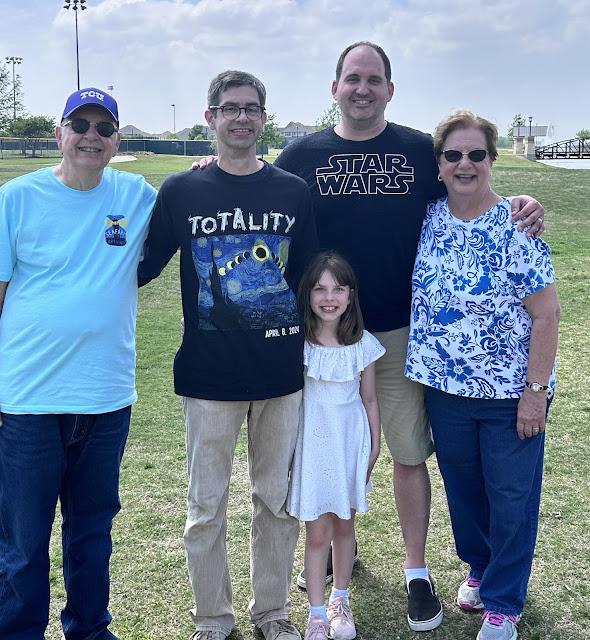Baily’s Beads! Diamond Ring!
As I mentioned in my solar eclipse checklist post (See it a few posts back), the sun is a thin crescent as it approaches totality. A few seconds before totality, mountains on the edge of the moon break up the crescent into a string of beads. The beads themselves are sunlight shining through valleys on the moon, and the spaces between the beads are the mountains. These are called Baily’s Beads. British astronomer Francis Baily noticed them at an annular (ring of sunlight) eclipse in 1836. He was not the first person to notice this phenomenon, but he was the first person to correctly explain what it really was, and to give a complete description of it.
See more details about his report at
https://skyandtelescope.org/observing/historic-discovery-bailys-brilliant-beads/
These last one or two beads will linger for a few seconds before disappearing. At that point totality has started.
It’s best to keep your eclipse glasses on all the way through the Baily’s Beads leading into totality (if you’re looking at the sun). It’s fascinating to watch these beads dance for a few seconds before disappearing. Alternatively, you can be watching the shadow rushing in!
When totality ends, The Baily’s Beads will start to form on the opposite side.
But there is a very special moment that occurs right as the first couple of rays of sunlight start to emerge as totality ends.
While still looking directly (without your safety glasses) you can see the following: The first couple of rays of bright sunlight returning on one side, and the corona is still visible on the other side. The black disc of the moon is in the middle. All of this is set against the deep blue twilight sky.
It is a stunningly beautiful moment called the diamond ring effect.
It does require some caution, so here are some key points:
1. The diamond ring effect should be watched with the naked eye only
2. If you happen to use magnification during totality (such as binoculars)- which is fine- make sure you go back to naked eye viewing 15 to 20 seconds before totality ends.
3. This diamond ring effect should only be viewed for about 1 to 3 seconds. A good rule of thumb is to say the words “Diamond Ring” while it’s happening, and then look away (I did this in 2017, and did just fine. Experienced eclipse chasers do generally the same thing.)
4. This does not mean that you’ll get severe eye damage at 3.000001 seconds, but it is best to make your view of the diamond ring short. Take a quick glance, and then look away.
Here is a quote from Canadian optometrist Dr. Ralph Chou. He is part of an eclipse chasers discussion group that I am on. We were having an exchange on this topic:
“Yes, the diamond ring at C3 can be safely viewed for 2 to 3 seconds with the unaided eye but the protective filter should be used after that.”
After that quick 1 to 3 second glance at the diamond ring, You can quickly put your solar filter back over your eyes to catch Baily’s Beads.
Or you can watch the sky brightening.
Or you can watch the shadow rushing away to the northeast.
Or you could watch for shadow bands.
Or you can see how other people are reacting.
So much to see and experience!
These are incredible features that begin and end totality!
Get ready to take it all in!

Comments
Post a Comment